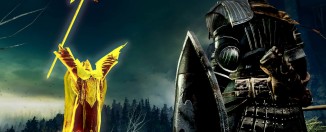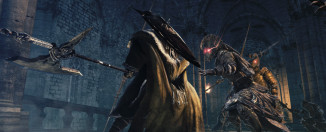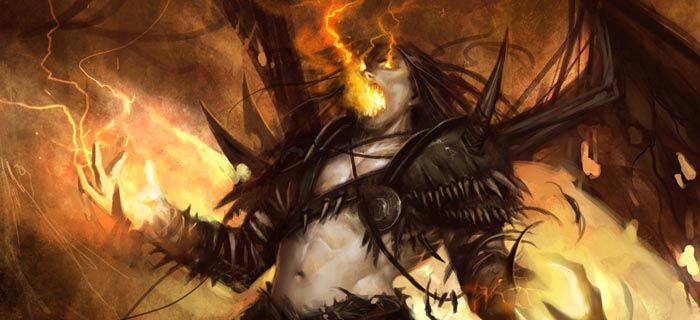Meet the specimens: Killing Floor beginner’s guide [Part 2]
Sun Tzu once said something that amounted to the following:
“It is said that if you know your enemies and know yourself, you will not be imperiled in a hundred battles; if you do not know your enemies but do know yourself, you will win one and lose one; if you do not know your enemies nor yourself, you will be imperiled in every single battle.”
And since I’ve never been one to argue with the man who invented zoos — well according to Jane Doe at least — I’m here today to follow up on my first basic strategy guide with a more in depth guide about the specimens of Killing Floor and about each and every one of the perks that you can select from to indulge in your mayhem wrecking ways. These tips hold true for most difficulties, and in the cases they won’t I’ll let you know.
Most of the variance here applies to enemies, and there’s a couple of ground rules you should know first.
- When playing a multiplayer match, the number of specimens as well as their total health gets boosted for each player on the team. Any specimen will be stronger with six players rather than two, and this makes the high tier specimens incredibly durable and dangerous in multiplayer situations, remember this.
- At higher difficulties specimens both have more hit points (as you might have expected) but also move faster, making run and gun tactics somewhat more difficult than at lower difficulty levels.
- Specimens can be baited into fighting each other under certain circumstances. This is both amusing and beneficial. This most often happens when a Bloat vomits and damages specimens that are in the vicinity.
- Decapitation, whether via headshot or melee attack, renders some specimens unable to use their special abilities. Any headless specimen will eventually “bleed out” given enough time.
- The specimens have unique auditory cues, but for nearly all of the higher level specimens the player characters will often say something relevant. In some cases your character might say something about a specimen even before you catch sight of it in game for the first time. Use this to your advantage. You’ll learn these on your own over enough play time, but I’ll include one or two lines for each in the descriptions where applicable so you can get the gist.
Anyways, with that out of the way it’s time to actually get to the nitty-gritty of each specimen that you’ll find in Killing Floor. Note that I’ll be giving the general rounds when you can first expect to see these specimens appearing, and for each I’ll be assuming long game which is ten rounds. Anything shorter and you can of course expect to see the nastier stuff appearing sooner.
The Clot
The most common and weakest of the lot. This fellow appears from the very beginning of the game and is ever present. A single Clot is generally just a nuisance, but a group of Clots, or a Clot with other specimens presents a greater danger.
The one ability that these guys do have is quite a pain in the ass: they can grab you, which prevents you from moving until you either damage the Clot enough, or until you jump to break the hold. On Hell on Earth jumps will not break Clot holds. Only the Berserker is immune to being grabbed by Clots.
Clots are relatively easy to kill on any difficulty if you’re using a levelled up perk. Head shots make quick work of them. Be careful about getting surrounded though, and bear in mind that Clots can become unwitting meat shields for other, stronger specimens in the right circumstances.
The Gorefast
Looking like he’s coming from having left his birthday suit at the cleaners, this skinless wonder is probably the closest thing this game has to a glass cannon. Gorefasts aren’t very durable, barely more so than a Clot. However they are extremely fast and do substantial damage; they are not to be underestimated.
These bad buys also generally start appearing on the first wave, and are the first specimens that have verbal cues. If you find your character belting out something like “Jesus, mind that bloody great knife!” or “Christ! He’s been out in the sun for too long!” then there’s a Gorefast nearby. Of course given how fast these assholes are by the time the line is finished it’s probably going to actually be right next to you provided you haven’t dealt with it.
The Gorefast’s ability is to run. This might seem goofy, but closing the distance at an alarmingly fast rate can really throw players off. Also, they are one of few specimens that can attack while moving. If you bait a Clot or a Stalker into attacking and they miss then they’ll be stuck in that attack animation until it’s done, unable to move. With a Gorefast they can do that same kind of animation, but they can also attack while still moving forward. This makes the act of baiting them into attacking much more hazardous than with any other specimen.
As with Clots, headshots make fast work of Gorefasts. These guys are nightmares when they come in packs if you don’t have a weapon that can spread the love around like a shotgun. Decapitating a Gorefast prevents it from running, but until it dies it can still take a good swing at you, so be careful.
The Bloat
The big bundle of gross is the last of the specimens that can appear as early as wave one, and it’s kind of hard to miss. The Bloat stands taller (and wider) than almost any other specimen in general. The Bloat is by far the slowest specimen, although still not to be disregarded when seen. There are two methods that a Bloat uses to attack; most commonly it will attempt to vomit on you, which both disorients and deals damage over time this is instantly lethal without body armour or perk resistance on Hell on Earth (Berserker and Medic perks mitigate this), the second attack is to take a swing at you with its meat cleaver.
Bloats are basically one of the tanking specimens. They have a stupidly large amount of hit points for being an early enemy, and if they die they blow up and spatter their acidic bile over everything. There is a solution to this though: that’s right, headshots. A Bloat will still lose its head just as easily as any other common specimen, and due to its slow speed it’s rather easy to decapitate it. Once you do it can no longer vomit, and if left to bleed out it also won’t explode when it dies.
As mentioned before, Bloat vomit can hurt other specimens. If it vomits on something like a Clot then the Clot may attack it and the two will keep each other occupied until one dies (usually the Clot). However, a Bloat can sometimes do this to a Scrake or Fleshpound. If this rare instance happens then you must do everything in your power to take advantage of it.
The Crawler
Spawning on wave two and beyond this literal pest is best relegated to the same category as the Clot: harmless under most circumstances, certainly annoying, but dangerous if left unattended and when in large groups.
The Crawler has relatively little in terms of hit points, but makes up for it by being a generally annoying target, these little bastards are close to the ground and can also spawn from places that other specimens can’t like air vents, ducts, and general confined spaces.
The fact that they’re also mostly black helps them blend in to some of the more drab backgrounds, so be on the listen for someone saying something about “I always hated bloody spiders.” or “Oh crap, they hop too!” Crawlers attack in two ways: the most common is a leap toward their target that quickly closes the distance. If the target doesn’t move or they just generally get close enough they’ll mostly just bite until killed. Crawlers can be baited into leaping once you get a general distance down, making them waste an attack and opening them up for fresh hot lead pie.
The only real piece of advice here is watch above you, and then aim down. These guys aren’t that tough, like I said. Like most bugs though, they’re annoying as hell.
The Stalker
Ah, the invisibitch. Appearing alongside wave two specimens, when you hear someone talking about invisible women that means that a Stalker is around. The Stalker shares the annoying slot with the Crawler, except her trick is that you can’t see her most of the time (with the exception of Commandos, who can always see Stalkers from certain distances depending on perk level).
Another thing she shares with the Crawler is spawn points, so you might actually get some of them travelling in the same general groups together. Because she’s invisible the Stalker is actually one of the more vocal specimens, asking for things like kisses or just generally muttering to herself. It’s not impossible to see a Stalker while she’s cloaked, but it’s pretty damn difficult.
Stalkers are mostly just annoying, they don’t have much hp and they can also be stunned with sufficient damage, making for easy kills. Stalkers are the bane of a Demolition player because at a certain distance she can still make the grenade you’ve launched blow up for massive self-damage. Demos should always take care to be aware of Stalker presence as best they can so they don’t blow themselves up.
Stalkers basically rend with their hands, but like most specimens they have to stop to attack, so if one appears in front of you and you can back up you can avoid the lionshare of the damage dealt and pick her off rather quickly, be careful of getting surrounded by a group of them though.
On a final note since Commandos need to kill Stalkers to level up their perks it’s considered general courtesy to leave Stalkers to them when it’s not a problem to do so.
The Husk
One of the only specimens with any sort of attack range, the Husk is an annoying opponent for nearly any perk. Appearing as early as wave two and almost definitely by wave three, they can tank almost as well as a Bloat in some cases, and have more head health are harder to hit heads as well.
The Husk moves at a relatively leisurely pace stopping every so often to take frustratingly accurate pot-shots with its flame cannon. Husks have a decent aim and can even lead targets, so the only real counters are hard cover or being a high level Firebug. Husks themselves though have a high fire resistance, so a Firebug is not a good choice in general to take them out. A Husk charging a shot makes for a stationary target, and a good pop to the head can stun them and allow for an easy follow up. However, if you hear a Husk charging up a shot and can’t see where it’s coming from then it’s advised that you try and get around a corner or behind something.
The Husk does have a sturdy close range punch attack, but baiting him into trying to clock you over and over prevents the much more annoying cannon shot from taking place. It will generally take some time for a Husk to actually get within that range though, and the sooner that they can be dealt with the better.
It’s extremely rare, but a Husk cannon shot can detonate thrown grenades and perhaps shot ones as well. Be extremely careful about your grenade usage when a Husk is around, lest you end up getting blown up in an extremely embarrassing manner.
Get more Grahf
Enjoyed this article? Check out Grahf Games for more awesome content from the author. And don’t forget to check back later in the week for Part 3 of his Killing Floor strategy series!

![Meet the specimens: Killing Floor beginner’s guide [Part 2]](https://www.toptiertactics.com/wp-content/uploads/2012/02/killing-floor-specimens-monsters.jpg)






[…] that we conclude the basics of getting into Killing Floor. Now read Part 2 of this Killing Floor guide, which covers specimens and how to beat […]
Crawlers are annoying as hell, especially to Berserker players like me. I actually have to crouch to hit them sometimes.
I reserve my Pistol shots just for them!
It’s the best weapon to deal with them, because even if your perk doesn’t give you any headshot bonus or nothing they are easily one-shooted – seeing that their head is on the same level as their body you can’t really miss it.
I don’t suppose you have advice for taking on the Scrake, Fleshpound or Patriarch?
The Scrake
Spawning as early as wave five, the Scrake is one of the more uncommon and threatening specimens in the game. Anytime someone mentions anything about a chainsaw there’s bound to be one of these big guys nearby, looking like an amalgamation of every nightmare doctor, dentist, or vet that you might have ever pissed your pants about.
Scrakes boast a large amount of health and also have a 50% immunity to crossbow rounds on the Hell on Earth difficulty. They lumber around at a decent speed, looking for things to tear into with their chainsaw. However, after taking enough damage a Scrake can and will fly into a rage in which is runs towards its target and behaves much like a Gorefast, attacking while moving.
Scrakes are best left to Sharpshooters, Support Specialists, and Berserkers. Sharpshooters can easily stun a Scrake or completely decapitate it with a couple of well aimed crossbow or other high tier weapon shots. A Support can kill one with most of the clip of an AA12, and a Berserker can easily kite a Scrake and use heavy blows to chain stun it. Berserkers are actually one of the preferred classes for dealing with Scrakes because they don’t waste ammo and free up the rest of the team to concentrate on other threats.
The Scrake has some immunity to explosives, but like most things in the game it won’t survive a sustained barrage of grenades, whether tossed or fired from a launcher. Be careful about him closing the distance and forcing you to self damage if using a grenade launcher though. Scrakes are tough, but not difficult when managed properly.
The Fleshpound
Appearing at wave seven and beyond, Fleshpounds are by far the most dangerous enemy in the game excluding the actual boss himself. Fleshpounds are priority targets, and only Sirens should be dealt with before Fleshpounds. Anyone who spots a Fleshpound regardless of where they are should announce its presence over voice or text so that the entire team can rally, especially dangerous are when they spawn in pairs which can and does happen frequently on waves past seven.
Make no mistake, a poorly handled Fleshpound is a potential total party kill waiting to happen. They pack a mean punch and take as well as they get, and their trick is one of the nastiest in the game: they can rage.
A Fleshpound has two criteria via which it can become even more homicidal: the first and most common being taking more than a certain amount of damage during a period of time. The exact window on this damage is 320 within three to five seconds. In layman’s terms this is a single shotgun blast from a level six Support, two handcannon headshots from a Sharpshooter, two grenades (or one from a Support or Demo). What I’m trying to get at here is that it doesn’t take much damage to get this guy angry, so you have to hit hard, fast, and in unison if you want to avoid the brunt of the damage.
Of course, I haven’t mentioned the second way a Fleshpound can rage: when they spawn they’ll target a player just like any other specimen. However, if they can’t get to the target and attack them after an extended period of time they’ll become frustrated and rage out. This means that if you do attack a Fleshpound it will rage, and even if you don’t attack a Fleshpound it will rage eventually anyways unless the entire team can keep out of it’s line of sight for extended periods of time.
So, how do you deal with this meat grinder on legs? Well, there are some general strategies you can employ. A two pipe bomb trap laid by a demo will outright kill a Fleshpound on normal, and sufficiently weaken it up on higher difficulties so that it can be easily finished off. By far the safest method is for a Sharpshooter to quickly headshot a Fleshpound twice with a crossbow, which is usually enough to decapitate it on any difficulty but Hell on Earth, since Fleshpounds get increased resistance to crossbow shots on that difficulty (65% as opposed to 50%). A level six Support Specialist can either outright kill or severely weaken a Fleshpound by laying a full AA12 clip into it. Spamming grenades at it as a group will also serve to weaken it up before it can do a lot of damage.
To put it basically, a Fleshpound requires some foresight and preparation to take down with a minimum of danger. Make him rage when you want him to rage, and take him down hard and fast to prevent a massacre to your team.
One final interesting note: an enraged Fleshpound is just as dangerous to his own ‘teammates’ as he is to you. With this increased movement speed and berserk fury, a Fleshpound can and will mow down anything in its path to a target – including other specimens. It will literally turn anything sort of another Fleshpound or Scrake into a fine red mist to get to you, which makes for an interesting if unbelievably dangerous option to clear out a large group of enemies under the right circumstances.
The Patriarch
Daddy’s home, and he’s massively pissed off that you’ve been mean to his kids.
The Patriarch is always his own additional wave after the prerequisite number of waves are done. This nasty asshole is the only boss in the game, and he is quite capable of completely wrecking your shit whether you’re prepared for him or not.
The Patriarch has a large pile of tricks, including be able to turn invisible like a Stalker (although a Commando can see through this invisibility as well), having a run speed that makes him the fastest thing in the game without exception, hugely damaging physical attacks, and long range capabilities to boot. On top of all of that he can heal himself up to three times and also summon more specimens to deal with. After he runs away due to getting too damaged he’ll find a place to heal and sic his babies on you: the first time it’s only Clots, the second time Clots and Crawlers, and the third and final time both of those and some Stalkers as well.
It should be noted that a Patriarch can spawn within sight of the players, this is a worst case scenario because it causes a glitch were the camera stays on him even after he starts acting offensively for a couple of seconds, thus meaning that you can’t know which direction you’re going (although you can still move around) and might eat a cheap rocket or chain gun death. Like I said this is a worst case scenario, and if it begins to happen try your best to get out of his line of sight even though you can’t really suss out where you’re going.
When it comes down to the line, you cannot outrace the Patriarch in terms of damage. His long range attacks can easily kill players within seconds if they’re not careful, and his melee can take a person from full health and armour to critical or even outright dead within two attacks. Luckily at least his long range attacks are well telegraphed: you’ll clearly hear him say something like “One in the pipe” or “Stay there. I’ll make this quick.” then there’s going to be a rocket incoming. Hard cover is about the only solution unless a Sharpshooter can stun him with a crossbow shot, because if you get hit by a rocket directly you will die. Even the splash damage and radius of the impact is terribly damaging, so if you can get around a corner or well away for the blast radius the safer you’ll be.
His other long range attack is a chain gun which isn’t quite as immediately deadly, but not by much. Just getting behind any solid cover prevents this from damaging you, but if you’re caught in the open it can and will turn you into Swiss cheese in seconds. He generally does a three burst method, so once you hear the third volley die down it’s generally safe to come out, although waiting for another couple of seconds just to make sure is probably a good idea as well.
The Patriarch likes to cloak and get close enough to a target to gut them, so it’s always advisable to have a Commando on hand to keep track of when he’s incoming and just who he’s going after. Dealing enough damage to the Patriarch will stun him, causing him to drop to one knee then run away to heal (assuming that he has heals left). It takes things like an entire explosive volley or AA12 clip to do this though and even then it’s not entirely reliable.
So, how does one beat such a monster of an opponent? Well, there’s a couple of effective strategies. Pipe bomb spam used to be effective and to a certain extent still is, but he can blow them up and outrun the detonations while cloaked so it’s not an optimal solution. One dangerous but effective method is to get him into an area where the only exits can be welded, and then welding him in with the team. I know that this sounds absolutely insane, but thanks to the way his AI is programmed once he gets damaged enough he’ll try to run away, but encounter the welded door and need to use the rocket launcher to blow it open, at which point the entire keep can gang up and murder him (keeping in mind to not use grenades that would blow the weld and allow him to escape).
Generally you should be prepared for a drawn out battle if you can’t trap him effectively, and when he takes off to heal the team should likewise patch themselves up. When the Patriarch appears it’s important to hit him with all you’ve got. Unlike a Fleshpound he’s not going to rage if you damage him, so it’s essentially a team just trying to pour enough damage into him to get him to back off or just outright kill him. After the third wave he won’t back down, so remember that it’s all or nothing. You should legitimately expect at least a couple of squad members to die, but when/if you down this bastard it’s over, you win.
Good luck, you’ll probably need it.
You missed the Siren, the most annoying specimen IMO
[…] of the original Killing Floor will recognize all of these monsters, but here’s a list along with a guide on how to best deal with these foes. The only one which is not present in Killing Floor 2 is the […]